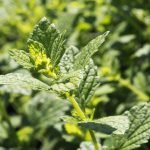Marijuana Use Could Have Negative Impact on Cerebral Blood Flow
The popularity of marijuana as a medicinal agent, and also as a recreational substance has increased dramatically within the last decade. Over half of the United States has legalized marijuana either for medicinal use or both medicinal and recreational use, and the likelihood of future national legislation is high. The conditions for which cannabis may be beneficial are certainly plentiful: pain management, insomnia, cachexia, anxiety, depression, are a few. However, there is a rhetorical comparison which is made between alcohol and marijuana which seems to paint the picture that there is little to worry about when using the latter. Colloquially we hear people advocate for recreational use of marijuana by pointing out how horrible alcohol is, which may be giving marijuana advocates a false sense of security.
Recent research on marijuana’s effects on cerebral blood flow may be starting to give a more realistic appraisal of the substance’s continuous use. Numerous regions in the brain show low perfusion on SPECT in marijuana users. Of these, the most predictive area distinguishing marijuana users from healthy controls is the hippocampus(1). The hippocampus, is one of the principal structures for the consolidation of short-term memory into long-term memory, as well as spatial navigation. The hippocampus is especially affected in neurodegenerative pathologies such as Alzheimer’s diseases. This study certainly raises the question of deleterious brain effects of marijuana use.
This study really asks us to look more honestly into the use of marijuana, and the fallacies which have developed around championing its use. It is certainly a valuable herbal tool, and likely a less damaging recreational substance than alcohol, yet there are considerations which need to be appraised, especially now that it is becoming more ubiquitous. The route of administration needs to be considered above all. Carbon monoxide, tar, and other toxic by-products of combustion are still inhaled when marijuana is smoked. Also, the amount and duration of use needs to be critically examined in patients using marijuana, in the same way in which any other mind altering and potentially addictive substance are considered. Now that it’s out in the open, we have the opportunity to address these factors in an honest way which may allow us to maximize the appropriate use of this wonderful herbal friend.
- Amen DG, et al. Discriminative Properties of Hippocampal Hypoperfusion in Marijuana Users Compared to Healthy Controls: Implications for Marijuana Administration in Alzheimer’s Dementia.J Alzheimers Dis. 2016 Nov 24. [Epub ahead of print]
- Barkus, E, et al. Are deficits in cognition associated with psychotic-like experiences after cannabis?Hum Psychopharmacol. 2016 Nov;31(6):402-411. doi: 10.1002/hup.2556.
 Node Smith, associate editor for NDNR, is a fifth year naturopathic medical student at NUNM, where he has been instrumental in maintaining a firm connection to the philosophy and heritage of naturopathic medicine amongst the next generation of docs. He helped found the first multi-generational experiential retreat, which brings elders, alumni, and students together for a weekend campout where naturopathic medicine and medical philosophy are experienced in nature. Three years ago he helped found the non-profit, Association for Naturopathic ReVitalization (ANR), for which he serves as the board chairman. ANR has a mission to inspire health practitioners to embody the naturopathic principles through experiential education. Node also has a firm belief that the next era of naturopathic medicine will see a resurgence of in-patient facilities which use fasting, earthing, hydrotherapy and homeopathy to bring people back from chronic diseases of modern living; he is involved in numerous conversations and projects to bring about this vision.
Node Smith, associate editor for NDNR, is a fifth year naturopathic medical student at NUNM, where he has been instrumental in maintaining a firm connection to the philosophy and heritage of naturopathic medicine amongst the next generation of docs. He helped found the first multi-generational experiential retreat, which brings elders, alumni, and students together for a weekend campout where naturopathic medicine and medical philosophy are experienced in nature. Three years ago he helped found the non-profit, Association for Naturopathic ReVitalization (ANR), for which he serves as the board chairman. ANR has a mission to inspire health practitioners to embody the naturopathic principles through experiential education. Node also has a firm belief that the next era of naturopathic medicine will see a resurgence of in-patient facilities which use fasting, earthing, hydrotherapy and homeopathy to bring people back from chronic diseases of modern living; he is involved in numerous conversations and projects to bring about this vision.











